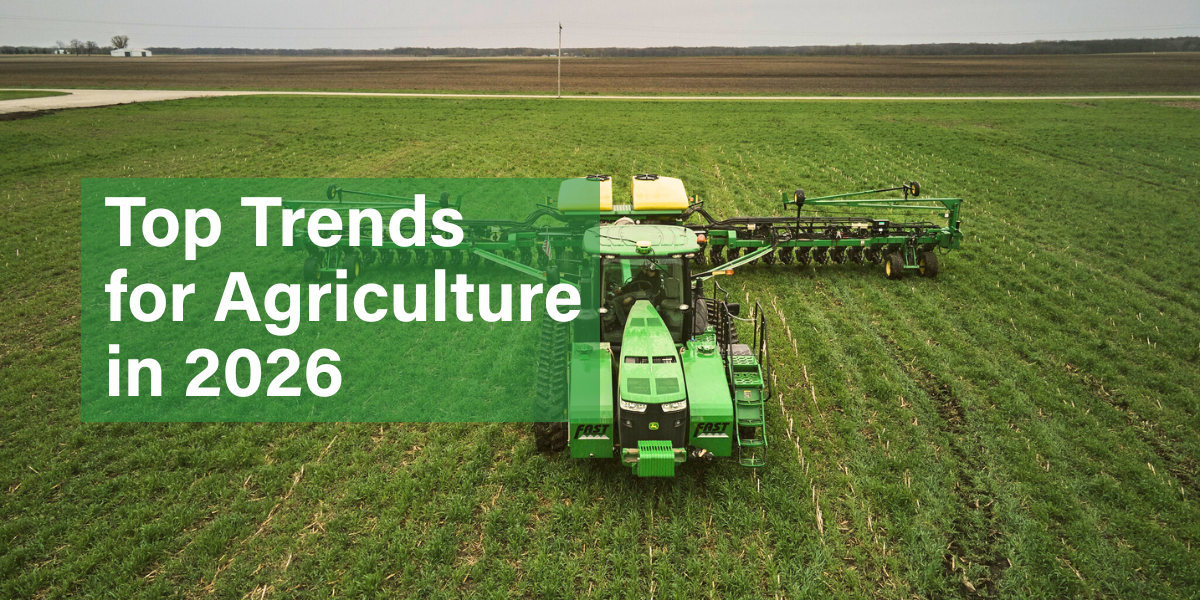Farmers see it every day: a new technology tool or service that promises to revolutionize crop production. Scores of tech companies—young and old, large and small—vie for farmers’ attention and dollars alongside more traditional machinery, equipment and agronomic service companies.
And it’s for good reason: New technology is a fundamental way to advance input efficiency, crop yield and quality. But while it’s generally a growing part of every year’s crop budget, innovation is often an early exit from farmers’ wish lists in years when crop revenue slips and budgets tighten.
Crop Prices and Tech Spending in 2025
That’s what’s expected in 2025, potentially slowing technology investment for Illinois soybean farmers and others like them around the country. It could advance a multiyear trend of sluggish tech adoption. Data from the U.S. Department of Agriculture
(USDA) in 2023 showed that only about one in four farmers has fully embraced technology such as precision agriculture in general, though adoption of a few
specific technologies has grown by double digits over the past two decades.
Illinois farmers are among the nation’s leaders in adopting precision ag technology. And in general, the larger the farm, the more likely it’s able to see the benefits of adding technology given increasing economy of scale across larger acreage, according to a U.S. Government Accountability Office (GAO) report summing up USDA’s latest survey of precision ag adoption.
Large farms often have “access to more favorable credit terms, which are often needed to finance the purchase of sophisticated, expensive equipment; and larger numbers of managers, permitting the kind of specialization of managerial labor that could lead to greater awareness of, and expertise in using precision agriculture technologies,” according to the GAO report.
The trend of growing technology adoption as farm size grows validates what some experts say is the driving force behind such purchases—and their potential
slowdown in the coming years. Especially in times such as these, when grain markets are bearish, spending on things like technology slows. In general, slow adoption often isn’t because of a lack of interest but rather because of a pragmatic evaluation of return on investment (ROI) with the addition of each new crop input, one expert said.
“During the tough period for the grain markets from 2014 to 2019, we saw capital purchases much lower. 2025 looks to be a tough year, so it will be important to preserve working capital,” said Michael Langemeier Purdue University Center for Commercial Agriculture Associate Director and Agricultural Economics Professor.
Different ROI Variables to Consider
But identifying the ROI of ag technology isn’t always a simple equation. It often requires consideration of a range of economic and operational factors tying back to a farm’s year-over-year crop production costs. Langemeier said there are four variables that contribute most to the ROI discussion with any technology:
- Farm expansion plans. If growth is in your future, you’re more likely to see financial benefits from adding new technology through economies of scale.
- Cash flow availability/needs. If you’re in a solid position with cash flow and overall liquidity, you’re more likely to see quicker financial benefits from adding new technology.
- Interest rates. Higher rates tend to stifle the adoption of and spending on new technology, especially given the impact of high rates on overall liquidity. Falling rates might open the opportunity to add new technology if it pencils out financially.
- Technological advantages. Adding a new tech tool or service can positively influence crop yield and quality. Make sure anything you add has a defined positive impact on your crop potential and, in turn, overall farm financial standing.
Look Beyond Your Farm Gate
It’s also important to take a broader view of technology as just one piece of overall crop budgets, especially accounting for overall
machinery costs. Langemeier said the latest data show per-acre machinery investment rose from $550 in 2020 to $700 in 2023, and he expects that trend to continue. This increase stems not just from new purchases but also from rising repair costs. So any new technology addition should be examined both for its impact on an operation’s bottom line as well as how it specifically affects general machinery spending as it relates
to overall crop ROI, whether positively or negatively.
“Machinery costs play a large role in crop breakeven prices, both in terms of the cost of a new machine or due to repairs. When crop prices are low, more farmers
will look to the used machinery market to cut expenses versus buying new, and that may influence the adoption of technology that’s increasingly more common with newer machines,” said Langemeier, co-author of Purdue’s monthly Ag Barometer
Index report. “There’s a definite advantage of new technology in its potential to increase yields and reduce costs, but you have to have cash-flow needs covered before you make a new purchase.”
Consider a Wider Time Window and Other Factors
Applying a well-grounded, ROI-focused strategy stretching over multiple crop years can help ensure you’re getting the most from your crop technology spend-
ing while helping maintain the liquidity and cash flow necessary to make ends meet, even when crop prices sink into the red.
In addition to thinking through ROI, Langemeier advises, broaden your perspective when thinking about adding new technology to your operation, including to:
- Develop a comprehensive, multi-year machinery investment plan. You’re likely financing any new machinery and technology over multiple years. So it makes sense to consider the functional lifespan of any technology you purchase, which often spans multiple crop years. Think about all technology spending in a multi-year context and the regular intervals for replacing other machinery and equipment.
- Maintain financial flexibility. Especially in a down year for grain prices, it’s important to think about any big-ticket purchase—including technology—through the lens of what it will mean to both short-term cash-flow needs as well as long-term operating capital. It’s much more financially sound to invest in new technology for your farm if you have your cash-flow needs covered and can maintain long-term equity.
- Stay informed about technological advancements. New ag tech sometimes grows and evolves in leaps and bounds, and whether it’s a new software platform or an autonomous machine, stay informed on how technology is changing even if you aren’t buying. Doing so will help you stay on the leading edge once you have the liquidity to invest in new technology.
Think About Current Tech Use and Comfort Level
Although it might sound obvious, consider your existing machinery- and technology-buying strategy in thinking through how you might make changes to get
more bang for your tech-spending buck. If you’re accustomed to buying new machinery, you’re likely used to the newest technology that it includes. But if you’re more likely to buy used machinery, you’re likely less accustomed to— and dependent upon—the newest tech tools.
If you are opting for used versus new machinery to cut overall spending but you want to maintain the latest technology in the cab of the tractor, for example, think about the cost to retrofit older machinery with newer technology. Just make sure you’re maintaining the pace of tech adoption that matches your operation and budget.
“If you have had variable-rate capabilities for applying fertilizer for a while, for example, are you going to retrofit a used machine with it, or will it be too cost-prohibitive to do that? If you depend on variable-rate technology, you may not be able to give it up,” Langemeier said. “I think w adopt technology much more
quickly when it’s on new machinery. That could become an issue for you if you normally buy new machinery and switch to used to save money.”
But if you find yourself in a situation where adding new technology becomes too much of a financial drag on your operation, don’t be too wary of getting out of step with the general trend of technology integration into your next tractor, combine or sprayer. Technology adoption is generally slow for farmers—a trend USDA researchers recently validated—so foregoing an innovation for your farm for one year won’t necessarily doom your ability to keep up with the latest ag technology, Langemeier said.
“Agriculture is one of the industries where there’s more innovation out there than what you can adopt on your farm at once. It just takes longer in agriculture. It makes sense that technology adoption moves slowly for farmers because it needs to make sense on a balance sheet and accomplish what it says in the field,” he said. “I think we tend to simplify ROI to the point where it’s like a one-to-one conversation. But there are a lot of moving parts, and it’s really a holistic decision.”
Recent Articles
See how ISA is driving innovation in soybean production by investing in farmer-led research and equipping growers with tools for the future.
By
What's in store for farmers in 2026? Illinois Field & Bean sits down with some of Illinois Soybean Association’s Corporate Partners to find out what they’re anticipating in the new year.
By Ashley Rice-Haddon, Illinois Field & Bean Magazine, Lead Writer

